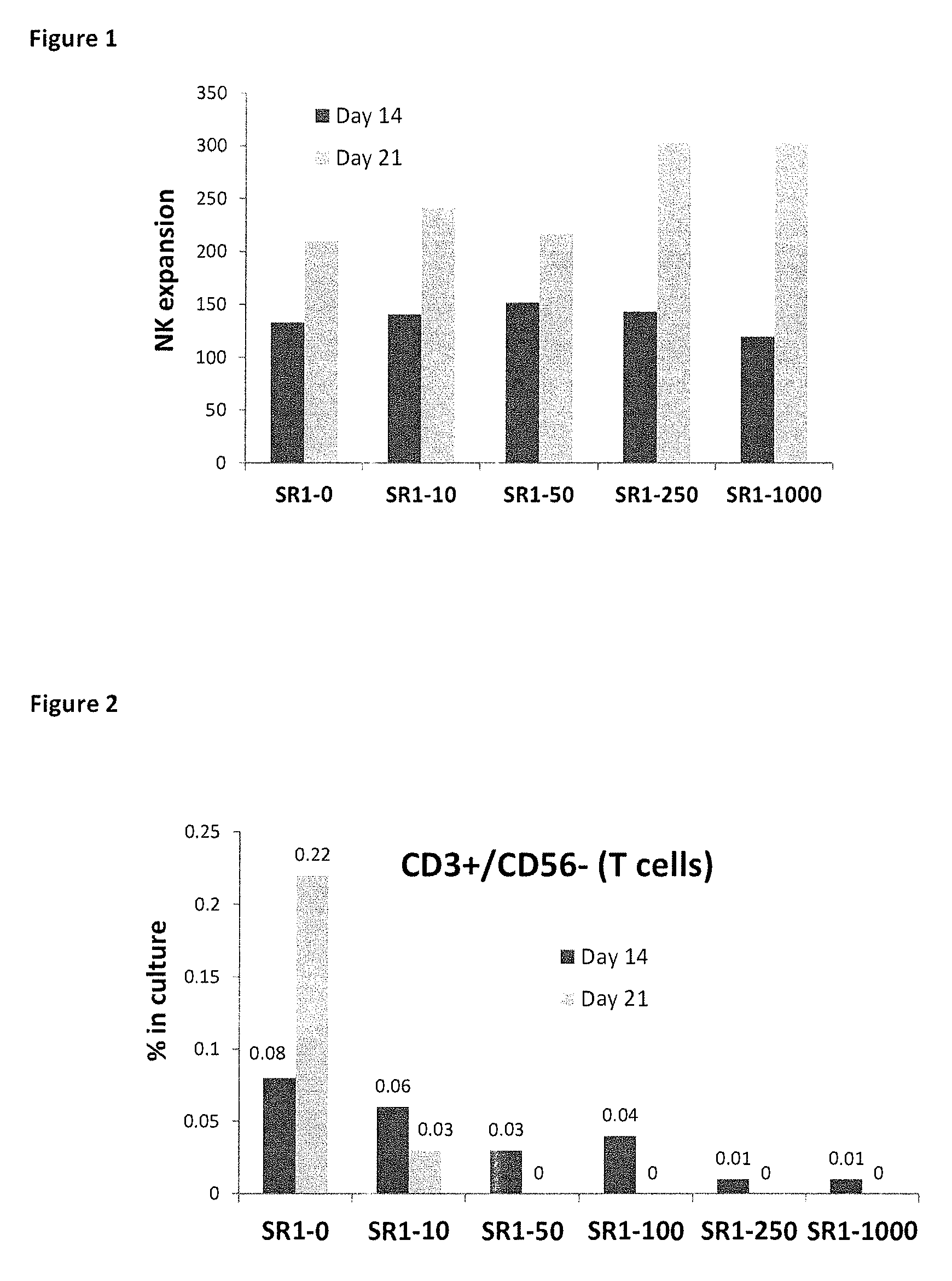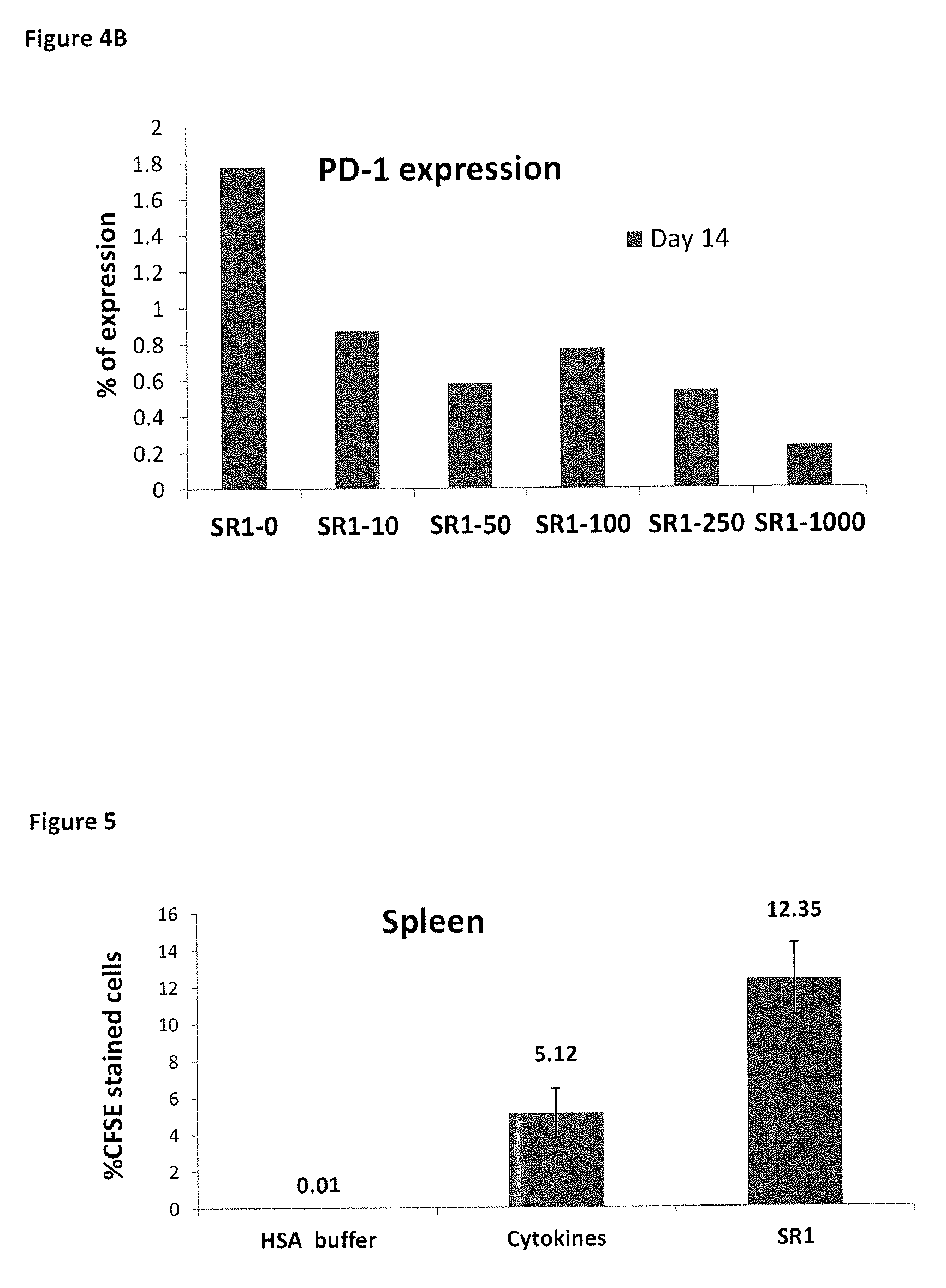Enhancement of natural killer (NK) cell proliferation and activity
a technology of natural killer cells and ex-vivo culture, which is applied in the direction of biocide, plant growth regulators, blood/immune system cells, etc., can solve the problems of limited nk-cell dose, low capacity of nk cells to lyse lymphoid cells, and reduced total number and activity of nk cells, so as to achieve enhanced ex-vivo proliferation and activation
- Summary
- Abstract
- Description
- Claims
- Application Information
AI Technical Summary
Benefits of technology
Problems solved by technology
Method used
Image
Examples
examples
[0979]Reference is now made to the following examples, which together with the above descriptions, illustrate some embodiments of the invention in a non-limiting fashion.
[0980]Generally, the nomenclature used herein and the laboratory procedures utilized in the present invention include molecular, biochemical, microbiological and recombinant DNA techniques. Such techniques are thoroughly explained in the literature. See, for example,
[0981]“Molecular Cloning: A laboratory Manual” Sambrook et al., (1989); “Current Protocols in Molecular Biology” Volumes I-III Ausubel, R. M., ed. (1994); Ausubel et al., “Current Protocols in Molecular Biology”, John Wiley and Sons, Baltimore, Md. (1989); Perbal, “A Practical Guide to Molecular Cloning”, John Wiley & Sons, New York (1988); Watson et al., “Recombinant DNA”, Scientific American Books, New York; Birren et al. (eds) “Genome Analysis: A Laboratory Manual Series”, Vols. 1-4, Cold Spring Harbor Laboratory Press, New York (1998); methodologies ...
example i
SR1 and the Self Renewal Capacity of Cultured Peripheral Blood NK Cells
[1010]When peripheral blood mononuclear cells are depleted of the CD3+ or CD3+ / CD19+ populations, a population enriched in NK cells is obtained, comprising 2-10% NK cells, with the majority of seeded cells belonging to the myeloid cell lineages. Following 2-3 weeks in culture with SR1, however, more than 90% of the cells in culture were NK (CD56+CD3-) cells.
[1011]FIG. 1 illustrates the expansion of peripheral blood NK (T-cell depleted) cells during a three week culture period, in the presence of cytokines (IL-2 or IL-2+IL-15), in scaled-up (10 ml volumes in culture bags) cultures. After 21 days, NK expansion was significantly higher in cultures treated with both SR1 relative to control cultures grown without SR1 (SR1 0). As can be seen in FIG. 1, a greatly increased expansion (fold increase relative to day 0) was observed on day 21 in the presence of SR1, while cytokines-only (SR1 0) controls exhibit a tendency t...
example ii
Ex-Vivo Exposure to SR1 Enhances NK Cell Function
[1013]The effect of SR1 on functionally related cell surface receptors was investigated. When expression of cell receptors involved in immunoevasion (CD200R and PD-1) and trafficking (CD62L) in the cultured PB derived NK cells were analyzed using specific antibodies and FACS analysis, strongly enhanced expression of CD62L (FIG. 3), and reduced expression of CD200R and PD1 (FIGS. 4A and 4B) in cells cultured in the presence of SR1 compared to controls (cytokines only) was observed. This strongly suggests an increased ability of the SR1-treated cells to migrate and home to the bone marrow, lymphoid organs and other target organs, and a decrease in cell surface receptors associated with suppression of NK cell anti-tumor activity and tumor immunoevasion.
PUM
| Property | Measurement | Unit |
|---|---|---|
| time period | aaaaa | aaaaa |
| temperature | aaaaa | aaaaa |
| temperature | aaaaa | aaaaa |
Abstract
Description
Claims
Application Information
 Login to View More
Login to View More - R&D
- Intellectual Property
- Life Sciences
- Materials
- Tech Scout
- Unparalleled Data Quality
- Higher Quality Content
- 60% Fewer Hallucinations
Browse by: Latest US Patents, China's latest patents, Technical Efficacy Thesaurus, Application Domain, Technology Topic, Popular Technical Reports.
© 2025 PatSnap. All rights reserved.Legal|Privacy policy|Modern Slavery Act Transparency Statement|Sitemap|About US| Contact US: help@patsnap.com



